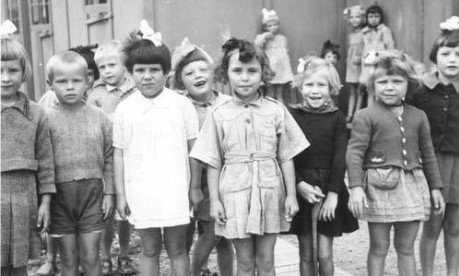They grew up in the Siberian gulag, travelled thousands of miles in harrowing drudgery across Russia to Persia, then sailed half way around the world to be greeted by thousands of smiling Kiwis.
Today their odyssey was remembered on Wellington’s waterfront as surviving Polish refugee children gathered for a wreath-laying with Polish foreign affairs minister Radoslaw Sikorski, who is visiting to mark the 40th anniversary of New Zealand-Poland diplomatic relations.
‘‘Today we are very grateful to the people of New Zealand who gave refuge to our children when they needed it – squeezed between Nazi Germany and Soviet Russia they were the victims and orphans of the gulag,’’ the minister said.
Among those attending were Eric and Halina Lepionka – two of the 733 child refugees who escaped war torn Europe and the Siberian forced labour camps where their parents were put to work by Soviet leader Joseph Stalin.
Eric was eight when he arrived at the Pahiatua Children’s Camp in 1944.
Halina was just a baby so it wasn’t until years later that they met at the Empress Ballroom in Ghuznee St and later cemented their relationship at Sunday mass in Newtown’s Polish church.
Mr Lepionka said the horrors and highlights of the journey – which took them from Siberia to modern day Iran, then to refuge in rural New Zealand – are in the back of his mind every day.
He remembered the minus 40 degrees Celsius Siberian winters.
‘‘When you slept you didn’t lean against the wall because you’d stick to it… it’s something that you only see in films,’’ the 76-year-old retired builder said.
By train, cart and foot the 240,000 first transport of Polish deportees from Stalin’s Siberian labour camps, both adults and children, painstakingly made their way to British-controlled Persia.
Mr Lepionka was then aged six, his mother died in Uzbekistan en route and his father returned to Poland after contracting typhoid – he never saw him again.
Up to 2 million Poles had been deported to the labour camps and some estimates put the survival rate at just 20 per cent. Continue reading
Sources
Additional readingNews category: Features.




